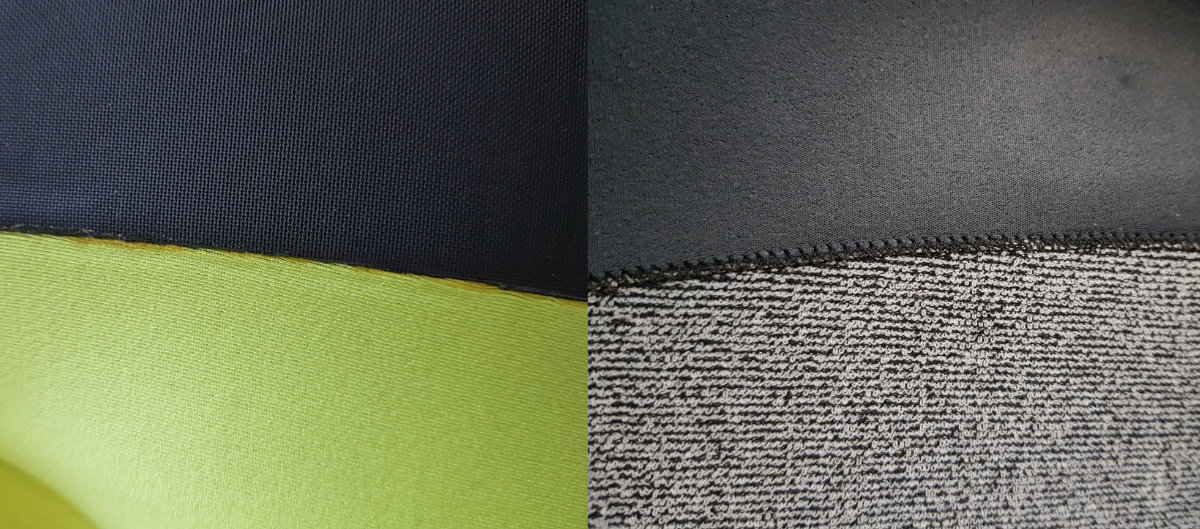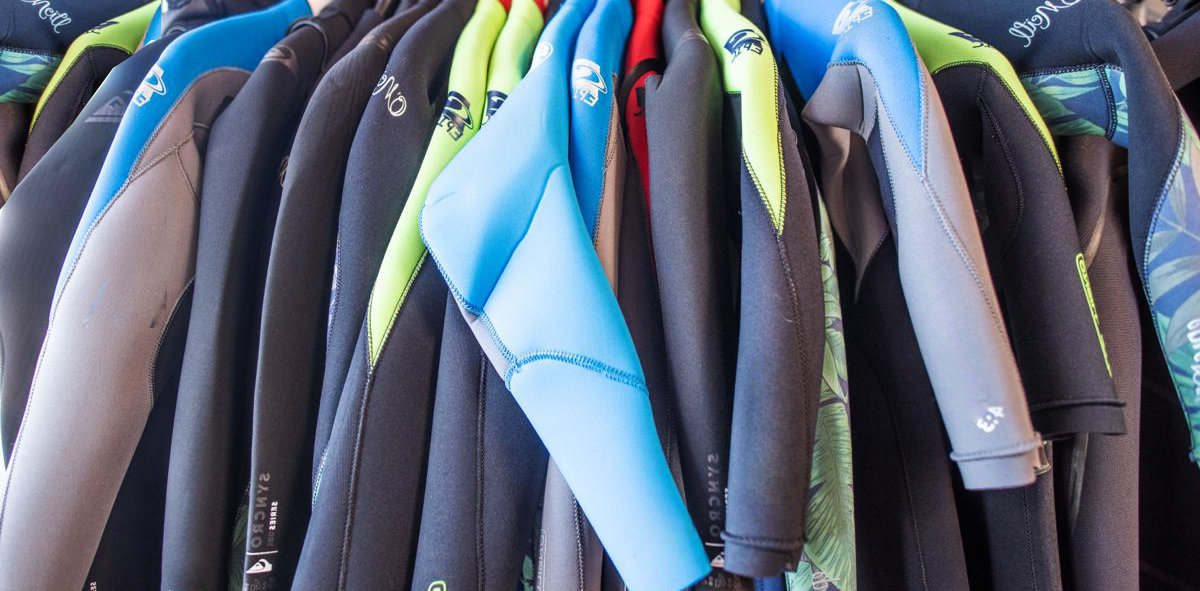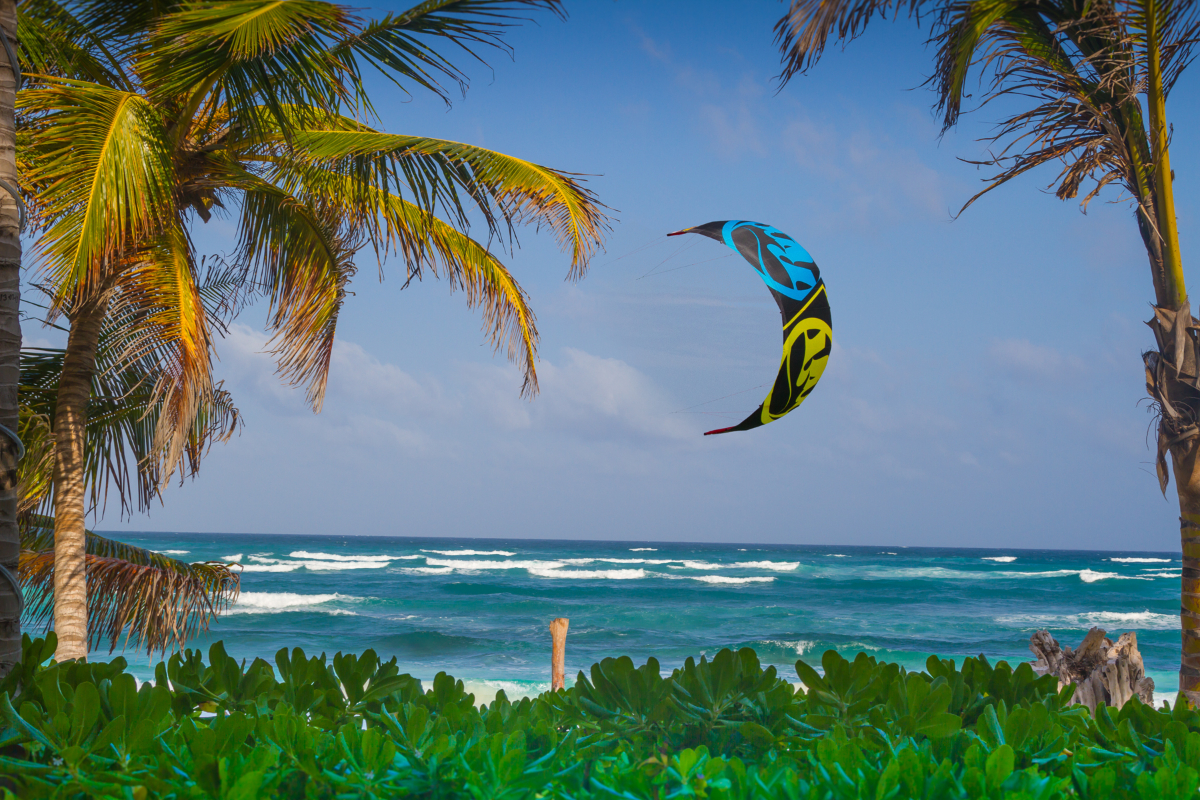12 tips to purchase your next kitesurfing wetsuit.
Looking towards your first or next wetsuit, key points you need to keep in mind while choosing.
Wetsuits are a fundamental part of the kiter equipment when we kitesurf whether you are an expert or a beginner. There are lots of choices for kiteboarding wetsuits on sale, both in models, prices (from 200 USD up to 600/700 USD), and performances. To help to find the right wetsuit to fit the rider’s kitesurfing conditions it is advisable to consider some fundamental points.

This post does not focus on which wetsuit is best for which condition specifically, you can find a quick reference in this short article:
https://www.mackiteboarding.com/buying-the-right-wetsuit-for-kiteboarding.htm
The goal here is to illustrate what you should look at while choosing the different options suitable for your kitesurfing specific conditions.
1. Wetsuit fit.
The wetsuit must fit you perfectly and adhere to your body in most of its parts. That is obvious, but fundamental because the tighter it fits you, the less water can come in contact with your skin creating discomfort and cold.
For that, it is very important to try it on and, and if possible, to avoid buying anything (online for example) without having tried the same model/size before in a shop or at a kite school.

When you wear it the first time, the wetsuit must feel reasonably tight around your body and it might be a little uncomfortable to be worn, but as said, the tighter the better as long as you can normally breathe and move. Don’t exaggerate on the opposite side, it still needs to be comfortable once passed the effort to put it on.
2. Wetsuit price.
Even though the price of the wetsuit matters, since normally higher prices tend to correspond to better products, this aspect becomes important if we are choosing the wetsuit for cold kitesurfing sessions (we are not considering extreme temperatures below zero, where probably dry suits become the better choice). The use case is very important and to help in the evaluation, in this post we consider mild temperatures down to 10 Degrees Celsius (50 Fahrenheit) and cold temperatures below that level.
In case of cold conditions to avoid freezing experiences it is worth put into account a good investment, ignoring the very cheap wetsuits in favor of middle to high price range ones. Said so, very expensive wetsuits can hide some downsides and some middle-range ones can turn out more valid choices. A lot of riders become aficionados of specific brands advocating those brands as Ion vs Mystic vs Neil Pride… etc. to be the best, but even in the same brands' models there are a lot of differences. Keep reading to understand what you should look at while evaluating your purchase.
3. Wetsuit thickness.
The thickness of the suit can vary broadly with different combinations: 3/2, 4/3, 5/3, 5/4, 6/4 millimeters. Obviously, we need to choose the thinner ones for mild conditions and go down to the thicker ones if we plan to use the wetsuit for cold kitesurfing sessions.
But this is not as straightforward as it seems. Every model can present different distribution of the thicker or thinner parts, changing dramatically the capacity of the wetsuit to keep you warm. For example, you can have a 5/3 wetsuit where only the chest is 5mm and all the rest, including the back, is only 3mm, or another model where all is 5mm and only the arms and legs are 3mm. Knowing that, you can figure out how different these will feel in the water, being called both 5/3 wetsuits.

4. The neoprene type.
Not all neoprenes are born the same. Neoprene is the main material a wetsuit owes its capability of isolating from the cold water keeping the performance of flexibility and adherence to the body. Neoprene is basically a rubber-like compound filled with microbubbles of nitrogen (a gas with very low thermal conductivity) and it has two main types the petrol-derived and limestone processed ones: even though some new interesting materials like vegetal derived neoprene are coming to the market, these two are the most common.

To simplify, the petrol-derived neoprene is cheaper but normally less performing in isolation and less durable, while the limestone neoprene, used on more high-end wetsuits is more durable and offers higher levels of insulation due to its higher cell density.
Here you can find a good description in detail of the differences:
https://blog.rideengine.com/limestone-vs-petroleum-neoprene-why-limestone-wetsuits-win/
5. Open-cell neoprene Vs closed-cell neoprene.
Remaining in the scope of the wetsuit materials, we can find open-cell neoprene, which is essentially just the pure neoprene fabric, or the Closed Cell neoprene, which is a neoprene fabric covered by a layer of canvas, normally nylon or polyester. The two different solutions offer different behaviors.

The open cell neoprene is normally more difficult to be worn but adheres to the skin very tightly granting maximum levels of insulation from the water. It also behaves better in windy situations, since the flat and slick outer surface lets the water flow away faster, getting dry in few moments while riding, with less thermal loss.
The closed-cell neoprene offers more comfort and ease in wearing it, it withstands more mechanical stress, therefore is more durable, but it keeps wet for longer periods, offering a worse performance when out of the water in the wind, reducing the insulation and wind performance (see also point 10).
For further details on the topic check here:
https://ninepinwetsuits.com.au/open-cell-vs-closed-cell-wetsuits/
6. The importance of the wetsuit design.
To take benefit of the two types of finishes just described and their specific properties, most wetsuit producers offer mixed solutions with open cell neoprene in the parts like the core where movement is limited and more insulation is required while implementing closed cell neoprene on the parts which need more flexibility and resistance to deformations and mechanical stresses.
Another of the latest tendencies of the wetsuit's design consists in having moved the zip placement from the back zip to a more protected front one. This solution also involves a double layer of protection that reduces dramatically the water intake in case of impact with the water after a missed kiteboarding trick. Normally the effort to wear front zip wetsuits is a bit bigger, but it pays back when riding in cold conditions, while in mild ones the back zip can still be a valid option thanks to the ease in putting it on.
7. Flexibility.
The best wetsuit for kitesurfing is the one that offers the greatest flexibility. Kiteboarding requires a lot of mobility for the tricks or just to freeride and the wetsuit must endure a lot of mechanical stress. For this reason, it is better to choose kitesurfing-specific wetsuits and avoid recycling your old diving wetsuit or even worse buying a new diving wetsuit thinking it will be good for both sports. That will result in quick ruptures of the wetsuit in no time.

A kitesurfing-specific designed wetsuit has the correct construction to grant flexibility and durability, applying strategically all the proper materials in the different areas of the body.
8. Stitches and seams.
There are different ways to put all the different neoprene sheets together to form a kiteboarding wetsuit.
The cheapest way is using an overlock or flatlock stitching. This technique creates holes that pierce through the neoprene and will let the water pass through. It is easily recognizable by the fact that the stitches are visible on both the wetsuit sides. If you ride most of the time in mild weather conditions, or for shorty wetsuits, you can opt for these cheaper models, but if you need good insulation, you have to lean to the next solutions to grant good comfort.

The next level of stitching is the blind stitching, where, before stitching, the wetsuit parts are glued together, and the stitching is done only on one side. This prevents pass-through holes as for the previous types and dramatically improves the wetsuit comfort.

Furthermore, many high-quality kiteboarding wetsuits have taped seems inside, on top of the blind stitches or even better double taping, inside and outside the wetsuit, up to arrive to use liquid seals to make them completely watertight.

The highest level of quality in wetsuit assembling is represented by the complete removal of the stitches in favor of new fusion methods or high-tech gluing that renders the wetsuit completely waterproof.

To deepen this aspect, this page can help:
https://www.cleanlinesurf.com/wetsuit-guide/wetsuit-seam-construction-and-paneling/
9. Inside lining.
Inside the wetsuit for cold temperatures, there is an extra lining material. Most of the riders underestimate the function of this internal detail, but a good internal lining prevents the water to freely circulate between the skin and the neoprene, helping to reduce the thermal exchange and improving the comfort at low temperatures.

Some very high-end wetsuits have even special infrared lining that converts the body heat to infrared radiations to bounce back the thermal energy towards the body, further increasing the heat preservation.

If you want to read more about lining check this out:
https://srface.com/knowledge-base/wetsuit-lining/
10. Wind performance of the kiteboarding wetsuit.
Wind chill affects pretty strongly the performance of a kiteboarding wetsuit. When temperatures go below 15 ËšC (59 ËšF) it becomes quite important in changing the temperature perception and therefore our comfort in the water.
From the following graph, we can see for example that with the air temperature of 10 ËšC and a wind speed of 25 Knots (29 Mph) the perceived temperature goes down to 5 ËšC (42 ËšF). If the temperature is 5 ËšC (42 ËšF) and the wind speed is only 20 Knots (23 Mph) the temperature produced by the wind chill goes to -1 ËšC (31 ËšF).
You can play and run your own simulations here:
https://www.wpc.ncep.noaa.gov/html/windchillbody_txt.html
These observations lead to understanding why the evolution of the design has brought wetsuits that are more specific for kitesurfing. Their external layers make the water runoff very quick, reducing at minimum the surface evaporation and the consequent temperature loss due to the wind chill effect. Materials like glide skin or smooth skin provide exceptional water drain and wind resistance performances and are positioned in strategic locations around the neck, the shoulders, and the endings of the wetsuit. In these positions, they adhere to the skin very well and provide comfort, fast draining of the water, wind resistance, and water tightening.
Another very good feature in medium high-quality wetsuits is the provision of a water-repellent coating on the areas of closed-cell neoprene. As explained the linen on the closed-cell neoprene captures the water and amplifies the wind chill effect. By adding the coating and letting the water flow of the linen the performance of the wetsuit wind resistance is greatly improved
11. Wetsuit age matters.
With time passing, Nitrogen bubbles tend to decay in the neoprene, and old wetsuits lose their capability to retain heat. A more than 3-year wetsuit can see its insulation performance reduced drastically. From this point of view, unfortunately, wetsuits are not like kiteboards and, if you kite in cold conditions, it is very advisable to change your wetsuit at least every 3-4 years. That will grant you will be riding with a kiteboarding wetsuit at the peak of its performance and feel warm.

The same is even if the wetsuit has never been used and is brand new from the store: after several years the neoprene loses its insulation capability regardless of the wetsuit use, so if you find discounted old 'new' wetsuits that have more than 4/5 years from their manufacturing date, you should be aware that the insulation performance of its neoprene might be substantially reduced.
12. Which wetsuit to choose.
Considering what just said, it is worth pointing out that a brand-new medium price, good quality wetsuit performs way better than a top-notch top-line wetsuit which is 3/4 years old, with similar neoprene thicknesses and construction. That brings you to consider what is the budget you want to dedicate to the wetsuit. If you can afford to spend up to or more than 500 USD or Euro every 2/3 years, and you mostly ride in very cold conditions, you probably will want to go for the top and enjoy the extra comfort and features which come with that. If instead you have partially used the wetsuit during the cold season and you are not so keen on investing a lot, you can go for a medium price wetsuit that will deliver anyway very good performances, being able to change it more often. The bigger mistake is probably thinking to buy the top wetsuit line, hoping it can last more than 4/5 years of use at its peak performance.
Changing a wetsuit so often can seem rather odd, especially considering the environmental impact that neoprene production and disposal involve. To minimize this problem we can opt for limestone neoprene wetsuits, which are less impacting (but still are) and more durable. In any case, the environmental question remains, and the disposal of the used wetsuits in adequated recycling facilities seems to be at least a minimal response.

Well, if you arrived at the end of this blog post, you are really into buying a new wetsuit, share your thoughts and comments below, especially if this information is or was useful with the purchase of your brand-new wetsuit.

Flexfit Baseball Cap

Logo: Yoga Kite Love
Promote your Kite School for free!
Index your Kite School in our database.
You will get free lifetime visibility on Kitesurf Culture website.
If you have a website, it will provide precious backlinks to improve your SEO ranking
Relevant Posts

Hidden benefits of pads settings in our twin tip kiteboards

Kitesurfing wave boards, do you want to give them a try?

8 Tips to buy used Kitesurfing Gear avoiding Bad Surprises

Safety Kitesurf Hook Knife, a must to have in your sessions

Do you really use the right kite shape for your riding style?

Kitesurfing Novel: Becoming Quetzalcoatl

Line Managers: the New Way to Quickly Set Up Your Kite. True or False?

Kitesurf Line Length and Kite Behavior: Long or Short Lines?

The Kitesurf session ended: tips for Kite Gear Maintenance

How to Give Your Kitesurfing Equipment a Double Lifespan

How to Choose the Best Kitesurfing Equipment (Part Two)
Get free Kitesurfing Resources and Tips
If you like our content and you want to be informed on the next blogposts release, please subscribe here. That will also help us to continue to provide quality content:
Give us your opinion.
Computer Backpack

Logo: Kitesurfing: making gravity optional since 1977
Promote your Kite School for free!
Index your Kite School in our database.
You will get free lifetime visibility on Kitesurf Culture website.
If you have a website, it will provide precious backlinks to improve your SEO ranking
Relevant Posts

Hidden benefits of pads settings in our twin tip kiteboards

Kitesurfing wave boards, do you want to give them a try?

8 Tips to buy used Kitesurfing Gear avoiding Bad Surprises

Safety Kitesurf Hook Knife, a must to have in your sessions

Do you really use the right kite shape for your riding style?

Kitesurfing Novel: Becoming Quetzalcoatl

Line Managers: the New Way to Quickly Set Up Your Kite. True or False?

Kitesurf Line Length and Kite Behavior: Long or Short Lines?

The Kitesurf session ended: tips for Kite Gear Maintenance

How to Give Your Kitesurfing Equipment a Double Lifespan

How to Choose the Best Kitesurfing Equipment (Part Two)
Flexfit Baseball Cap

Logo: Yoga Kite Love
Latest Posts

Kitesurfing Dubai: an honest guide. Tips, Spots & Winds

Unwind and learn: best beginner kitesurfing spots worldwide

Self-Rescue in Kitesurfing: A Crucial Guide to Safety

Kitesurf Ometepe: an Epic Kite Trip to Nicaragua

Kitesurfing Spring in Andalucia: Unexpectedly Great!